Systematics
Distribution
Mosquitoes are common over practically the whole area and in many parts occur in enormous numbers. They have been collected at altitudes of 14000feet and Culex fatigans has been found at 3760feet below ground level ( 903ft below sea level ) in the Kolar cold mines in south India.
Characters used in identification and classification
Adult:-
1) HEAD:
- Characters and coloration of scaling and arrangement of bristles.
- Form of bucco-pharyngeal armature of female (present only in genus culex).

2) ANTENNA:
- Coloration of torus and presence or absence of scales.
- Lenth of antenna compared with that of proboscis.
- Character of hair - whorls - scale - tufts.
- Clypeus shape , presence or absence of scales, palpi and proboscis : length ,shape,ornamentation
.JPG)
3) THORAX:
- Shape,scaling ornamentation and chaetotaxy of mesonotum and scutellum.
- Size of pronotal (pro-thoracic) lobes.
- Character of scaling if any on posterior pronotum.
- Arrangement of bristles on pleura.
The important groups of thoracic bristles are:
- Anterior pronotal on pro-thoracic (pronotal) lobes .
- Posterior pronotal (pro-epimeral) on the part of the side of thorax above pronotal lobes and infront of anterior spiracle.
- Pro-pleural (pro-sternal)on the part above front coxa and below anterior pronotal (pro-thoracic) lobe.
- Spiracular, a row immediately infront of anterior spiracle, separated from posterior pronotal by a slight ridge forming
- posterior border of posterior pronotum.
- Postspiracular, on membranous part of pleura behind anterior spiracle (especially charecteristic of aedes group).
- Sterno-pleural, a more or less continuous row on posterior border of sterno-pleura.
- Prealar, on the a small knob immediately below and infront of wing - root.
- Upper mesepimeral (subalar) immediately below and behind wing-root, on upper part mesepimeron, and infront of posterior spiracle.
- Lower mesepimeral, on middle or lower part of mesepimeron.
- Postnotal, a tuft of fine hairs on postnotum.
4) WINGS:
- Venation or arrangement of veins.
- Length of anterior forked cell.
- Size of micro trichia (small hairs on wing membrane).
- Coloration and shape of scales on veins.
- Length of wing from base of costa to tip.
- Presence or absence of hairs on squama and of hairs on upper and under side of wing at base.
5) LEGS:
- Ornamemtation especially presence or absence of pale rings or bands on tarsal segments, if present whether basal or epical or both.
- Comparitive length of tibia and of tarsal segments.
- Presence or absence of outstanding scales.
- Tarsal claws, whether toothed or simple.
- Presence or absence of pulvilli.
6) ABDOMEN:
- Ornamentation of dorsum and venter and character of scalling.
7) HYPOPYGIUM:
- Struture of terminalia of male, of importance in all genera.
- Terminalia of female of special importance in Aedes and Mansonia.
Pupa:-
- Form of respiratory trumpet.
- Arrangement of hairs on abdominal segment.
- Shape of paddles.
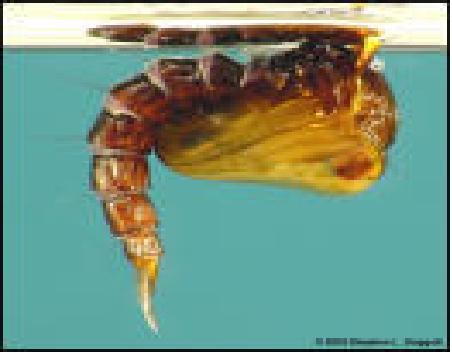
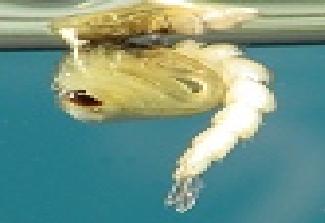
Larva:-
- Character and arrangement of frontal hairs.
- Character of mouth- brush hairs, pre-clypeal spines, and of mentum.
- Antenna- length and thickness of shaft.
- Chetotaxy of thorax and abdomen.
- Form of comb and struture of teeth of comb on abdominal segment eight.
- Length of siphon tube compared with diameter at base.
- Presence or absence of an acus at base of siphon tube on each side.
- Presence or absence of pectin on siphon and if present number and form of teeth.
- Number and arrangement of hairs on siphon and any modification of valves at tip of siphon.
- Extent of chitinization of anal segment.
- Characters of sub-dorsal, lateral and fan hairs.
- Length and form of anal papillae.
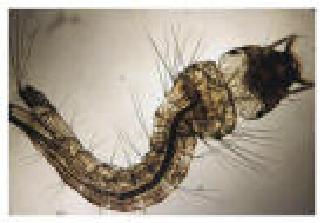
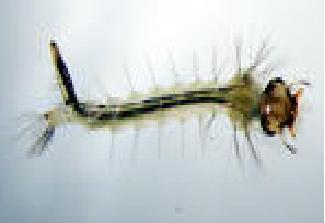
Egg:-
- May be laid singly or cemented together in rafts;
- They differ from those of Anopheline in the absence of lateral float
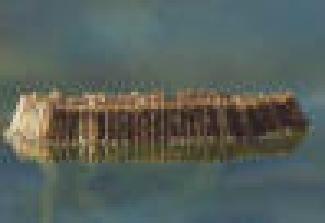
.JPG)